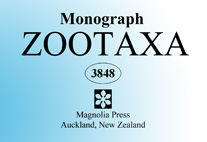Abstract
A new genus and species of titanosauriform sauropod is erected based on a partial skeleton found in the Lower Cretaceous Sasayama Group of Hyogo Prefecture, SW Japan. The new taxon is here named as Tambatitanis amicitiae gen. et sp. nov., which is diagnosed by the following features of the caudal vertebrae, chevrons and braincase: the postzygapophysis and the summit of the neural spine of the anterior caudal vertebrae are located beyond the posterior border of the centrum, the spine of the anterior caudal vertebrae is curved strongly anteriorly and bow-shaped in lateral view, the summit of the neural spine is expanded and hemispherical with its anterior face excavated by the posterodorsal extension of a deep and narrow SPRF, the transverse process of the anterior caudal vertebrae are short and L shaped, the anterior chevron is the longest among sauropods in proportion to body size, the distal ends of the anterior chevrons are rod-shaped, the distal ends of the mid chevrons are transversely thin and anteroposteriorly long without cranial processes, and the dorsal border of the shaft of the paroccipital process that forms the ventral margin of the posttemporal fenestra is short mediolaterally and V-shaped in posterior view. A phylogenetic analysis suggests that T. amicitiae is a basal titanosauriform, possibly belonging to the East Asian endemic clade Euhelopodidae. The caudals and chevrons are described in detail in order to document highly autapomorphic features of the new taxon as well as potentially phylogenetically informative characters. The discovery of T. amicitiae suggests that East Asian basal titanosauriforms were diverse not only in the number of the taxa but also in the morphological variation of the caudal elements.

